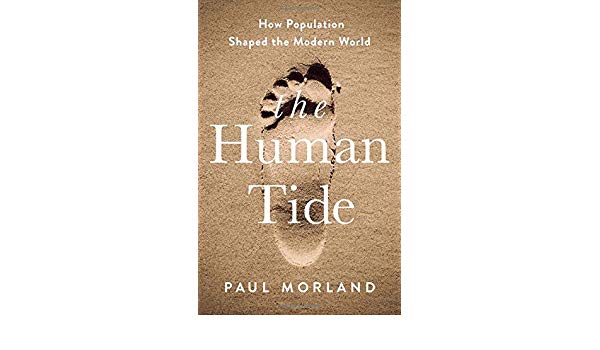Book Review: ‘The Human Tide’ – Paul Morland
The Human Tide: How Population Shaped the Modern World, Paul Morland, John Murray (Publishers), London, 2019
Everybody has an opinion on the whys and wherefores of global demography – the trends and mathematics of fertility, mortality and mobility. That’s why the late Hans Rosling did us a great favour with his stunning and accessible videos which referenced the data, and causal factors. While Rosling’s videos mention watershed events and innovations as precursors of change, Dr Morland of Birkbeck College at the University of London goes much deeper.
He starts with the big social, industrial, economic and military factors, and the mathematics and momentum of the “demographic equation” whereby much of the future is already “baked in.” Economics, technology and organisation play their role, but also more autonomous cultural factors, such as “herd” decision-making, and policies toward migration and population growth. In Australia we can recall Peter Costello’s weak joke in response to the ageing of the population – “have one for mum, one for dad, and one for the country”. Yet demography is only part – not all – of destiny because of contingencies: ‘people move’.
What’s the connection with refugees? Instead of wars between states, the dominant form since 1945 has been civil wars (a problematic term), where ethnic or religious groups are locked in bitter struggles for control of territory or polity, and these are often repeated not resolved. So central government resettlement policies to influence local demography can promote the political marginalisation or diminution of identity of subordinate groups, which creates refugees. Examples include “transmigrasi” of landless peasants from Java and outer islands to Papua in Indonesia, land transfers in the Tamil majority region of Sri Lanka to Sinhalese relocated from the south, and annexation of areas of the Palestinian territories by Israel which put Christians to flight as well as Muslims.
The latter situation is discussed in some detail, including relative procreation rates as a security and political factor in dominance.. Where citizenship and voting rights are an entitlement, the loss of a Jewish majority might explain Israel’s reluctance (up until now) to incorporate all parts of the Occupied Territories. Another demographic factor with political consequences is the ageing of the Palestinian population, suggesting a future with fewer young, disempowered men, the cohort most likely to fight back. The rest of the book is an account of the historical role of demography in place, Part Two being about Europe, and Part Three about Asia, the Middle East and North Africa. This effectively becomes a detailed “history of the world”, which I don’t opine on, but he provides a dense and integrated story, combining source material from many disciplines. There are short technical appendices on how life expectancy and Total Fertility Rates are calculated.
The book is presented as essentially a history not a policy guide, although he declares two operating principles as important. First, that we should regard the preservation and enhancement of the lives of others as being as important as our own, and second, that “when women have control over their own fertility, they collectively make wise decisions, with or without input from their male partners.”
But what about the future? there is little speculation in this book about climate change or future wars and conflicts. In Australia, the drivers of forced migration have received recent attention, as well as the refugee effects of climate change. In the latter case, some advocates warn that this is counterproductive, having little effect on politicians but likely to increase the population’s fear of refugees. His predictions are for a world which is more “grey” (older), more “green” (with more sustainable population and resource-use) and “less white” (both globally and inside North America, Europe and Australia). He expects the relative increase of the sub-saharan African population (from ten percent of the world in 1950 to about a quarter in 2100) will propel their wider mobility after a tipping point of increased prosperity. Conventional wisdom believes investment in poor countries will reduce emigration by creating local jobs, but research suggests circumstances where an enabled and larger middle class will become footloose. Again, ‘people move.’
Kevin Bain reviews refugee books at Independent Australia, and has compiled a Reading Guide for Mornington Peninsula Human Rights Group.
